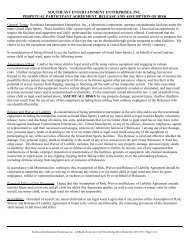Parent Education Core Curriculum Framework 2011.pdf - mnafee
Parent Education Core Curriculum Framework 2011.pdf - mnafee
Parent Education Core Curriculum Framework 2011.pdf - mnafee
Create successful ePaper yourself
Turn your PDF publications into a flip-book with our unique Google optimized e-Paper software.
EARLY CHILDHOOD<br />
DEVELOPMENT<br />
Approaches to Learning<br />
<strong>Parent</strong>s support their children’s approaches to learning when they:<br />
Curiosity<br />
1. Identify and support their children’s interest and excitement in<br />
discovery and exploration.<br />
2. Model curiosity and information seeking.<br />
Risk-Taking<br />
1. Allow their children to experiment with new and challenging materials<br />
and activities.<br />
2. Respond positively to their children’s mistakes or errors, encouraging<br />
them to learn from their mistakes or errors.<br />
Imagination & Invention<br />
1. Encourage their children to try new approaches to solving problems.<br />
2. Encourage their children’s demonstration of flexibility, imagination,<br />
and inventiveness.<br />
Persistence<br />
1. Understand the importance of uninterrupted play time.<br />
2. Encourage their children’s attention and persistence at tasks.<br />
3. Respond to their children’s requests when help is needed without<br />
being intrusive.<br />
Reflection & Interpretation<br />
1. Encourage their children to share their thoughts, ideas, and<br />
experiences about the world around them.<br />
2. Encourage their children to think about what they learn from events<br />
and experiences and apply what they learn in new situations.<br />
Language & Literacy Development<br />
<strong>Parent</strong>s support the development of their children’s language<br />
and literacy skills when they:<br />
Listening & Understanding<br />
1. Encourage their children to notice and distinguish sounds in their<br />
environment.<br />
2. Notice and respond to what their children say and do.<br />
3. Use rhymes and rhythms with their children to increase their interest<br />
in language, sounds, and words.<br />
4. Talk and sing with their children using language appropriate to their<br />
level of understanding.<br />
5. Provide their children with clear instructions that help them move from<br />
simple to complex directions.<br />
Speaking<br />
1. Allow time for their children to communicate verbally and non-verbally.<br />
2 Respond to their children’s attempts to communicate verbally and<br />
nonverbally.<br />
3. Engage in conversation with their children in home language.<br />
14





